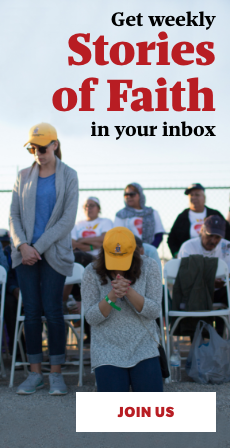An important event for the future of the Church in the United States happened September 20-24, and many Catholics know little if anything about it. The fifth national Encuentro was a gathering of some 3000 Hispanic-American Catholics in Grapevine, Texas, the culmination of a multi-year process of planning across U.S. dioceses. Catholic Extension Society has been an important part of this process because it impacts both the large Hispanic Catholic community as well as the rest of the Church. It is a hopeful sign of change within the Church, driven by the grass-roots faith of ordinary people. In these days when so much national and international attention has focused on those in power, the Encuentro is a hint of what happens when we listen carefully to the voices of people on the margins.
In the United States, the average age of Hispanic Catholics is 27, and about 40% are under the age of 21.
The Encuentro, which began with parish gatherings and later diocesan gatherings of people reflecting on the presence of God in their lives, is rooted in the theology and pastoral practice of the Church in Latin America over the past fifty-plus years. That practice of careful reflection and mutual listening offers the entire Church a model for how to live out a mature, discerning faith. Called “see-judge-act,” the model grew out of the Young Christian Workers movement of the early 20th century, especially under the influence of Belgian Cardinal Joseph Cardijn. It begins with reflection on what one has seen, in one’s own life and in a world where there is both sin and grace. It involves a kind of clarifying one’s vision, through listening to others, particularly those who are on the margins of society. And it moves people toward actions which reflect our common sharing in the Eucharist and our desire to live as a people of God. Ultimately, it aims at strengthening, renewing, and advancing ministry to Hispanics and to the rest of the Church.
The situation of today is in many ways very similar to what moved Cardijn to reconsider the Church’s spirituality as rooted in accompaniment of those on the margins, listening to their stories and reminding them of God’s compassion. The model is especially relevant among Hispanic Catholics because many are young. In fact, in the United States, the average age of Hispanic Catholics is 27, and about 40% are under the age of 21. And while the Church in the U.S. will become even more Hispanic in coming years, it is important to remember that there are still significant numbers of Hispanic young people who disaffiliate from the Church. It is important to listen to the stories of both those who remain and those who leave if the Church is to carry forward its mission.
Catholic Extension Society and Hispanic Catholics in the U.S.
Hispanic Americans are a vastly diverse group, ranging from Mexico, Guatemala, El Salvador and the other countries of Central and South America to Cuba, Puerto Rico, and other Caribbean nations. The history of these regions reflects centuries of growth, development, and change, often in circumstances of hostility, war, slavery, poverty, and migration.
The oldest Catholic churches in the Americas, as well as in the continental United States, trace their histories back to missionaries from Spain. Spanish missions were planted throughout modern-day Florida, Texas, New Mexico, Arizona, and California, and dramatically shaped the cultures of the Western United States. Catholic Extension Society has been a part of this story for over a century, supporting Hispanic communities from its earliest days, and even providing two seminaries for Mexican priests during the period when they were expelled from Mexico.
Catholic Extension Society was the first major Catholic organization in Puerto Rico, for example, helping to build a church in San Juan as early as 1908. Catholic Extension Society’s founder, Father Francis Clement Kelley, understood well that the mission of the Church in the United States was intimately connected with its mission throughout Latin America. He wrote books about the Mexican Revolution, sheltered Mexican bishops who had been expelled, and directed funds from Catholic Extension Society to support Hispanic workers on the railroads. Over the years, Catholic Extension Society has carried on his legacy of support to Hispanics, from regions with heavy concentrations such as Texas and California (sending over $100 million since 1906 to these two states alone), to more distant areas of migrant farm workers, such as Kalamazoo, Michigan and Youngstown, Ohio.
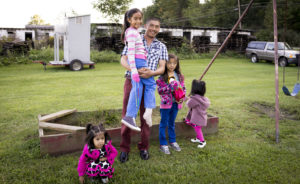
The ways that Hispanic Catholics have incarnated the gospel in recent decades offer clues as to why the Encuentro is so important. In short, it is reflective of a Church on the margins—a Church committed, like Christ’s opening mission statement in the gospel of Luke, to proclaiming good news to the poor. In 1968, the bishops gathered at Medellín, Colombia gave particular attention to Church’s presence among the poor. Later, in Puebla in 1979, they specifically described the Church’s “preferential option for the poor.” The Church, they recognized, could undertake that mission only if they listened carefully to the voices of the people of God. Moreover, they understood that the Church, comprised of mostly lay people, must involve an evangelization that moves people to mature faith.
The Encuentro process in the United States emerged from this Latin American matrix, nurtured by the work of Hispanic theologians and pastors who sought to respond to the plight of their brothers and sisters seeking a home in the United States. The first national Encuentro took place only a few years after Medellín, in 1972, and was dedicated to highlighting the need for a more robust Hispanic ministry. Ensuing Encuentros in 1977, 1985 and 2000 further highlighted the important contributions to this now massive population within the Church. (To cite one important statistic, over half of Catholics under 18 are Hispanic.) Catholic Extension Society supported the early Encuentros indirectly through funding of dioceses with few resources, and eventually supporting the salaries of people in new offices of Hispanic ministry.
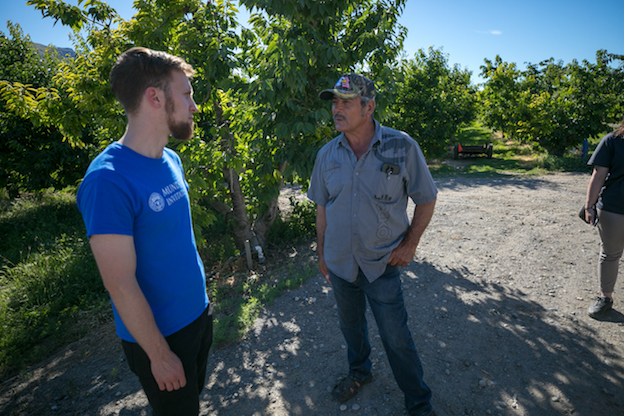
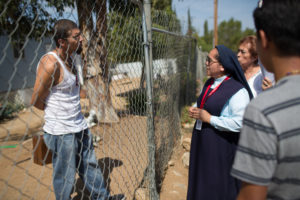
What surfaced during the early Encuentros was a recognition of a significant need for leadership among Hispanics, both ordained and lay, for the Church to commit itself to walking with them. Hispanics are drastically underrepresented among the leadership of the Church. Catholic Extension Society has addressed this need with several initiatives: seminarian education, the development of Hispanic lay leaders, the Latin American Sisters Exchange program, and the Young Adult Leadership Initiative. In the Yakima diocese, for example, seminarians minister to the large migrant farm population. With the Church as a strong presence among them, Yakima has produced a number of Hispanic seminarians in recent years. Similarly, several dioceses have participated in Catholic Extension Society’s Hispanic Lay Leader Initiative, initiated six years ago to insure the Church’s presence through trained ministers. Through the Latin American Sisters Exchange program, Hispanic communities around the country have had the benefit of dedicated religious women, whose work has borne fruit in countless ways. The Young Adult Leadership Initiative, too, has offered a number of Hispanic young adults in mission dioceses a pathway to a degree in theology and ministry at institutions such as Boston College, Notre Dame, and Fordham, so that they can use their new training to build the Church back home. These efforts are bearing fruit, evidenced by the fact that many of the speakers at the national Encuentro have participated in programs sponsored by Catholic Extension Society.
Looking forward with hope
The Encuentro and its effects are a sign of hope. It is a grass-roots effort, driven primarily by the faith of people on the margins of U.S. society. It is also an effort that is particularly attentive to young people in a time when many are falling away from the Church. The energy at this year’s Encuentro was palpable, with the participants I spoke with there voicing great enthusiasm, even during a period in recent Church history which has seen difficulties. They see firsthand the way that the Church is changing people’s lives for the better.
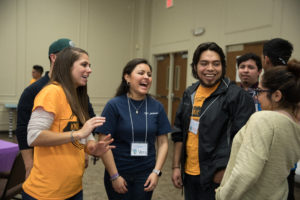
More and more we are beginning to understand that young people desire an authentic community dedicated to serving a world where they see suffering and disparity. Since the Encuentro is rooted in a missionary faith—that is, a faith which leads people to reach out to brothers and sisters on the margins in a spirit of friendship—it responds to the kinds of spiritual hungers that many young people report lead them away from religious practice. Perhaps most importantly, though, the Encuentro is unfolding within a vast, young community of people.
Change is afoot within the U.S. Catholic Church. It is not always an easy change. Differences of language and culture can make a church feel foreign, and to be sure there are a number of parishes that are in the midst of navigating this kind of change. There are others, though, who are pioneers. Catholic Extension Society is proud to support them, and to support the women and men who are leading the Church during this time. The Encuentro is an opportunity for all Catholics to remember the God who makes all things new.
Tim Muldoon, Ph.D. is Director of Mission Education at Catholic Extension Society.
